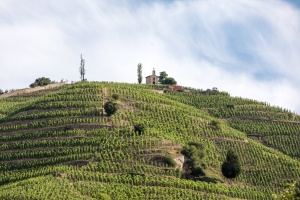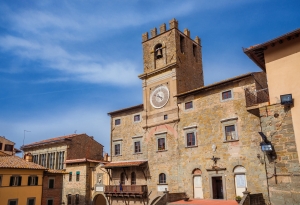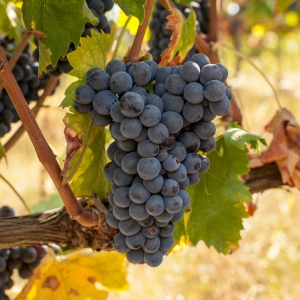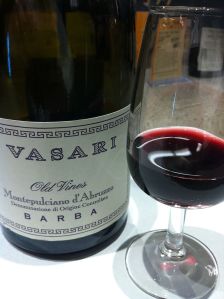Five Fast Facts about Saperavi
March 22, 2024 Leave a comment
 In one of the most extreme and impressive examples of everything old is new again that I have ever seen, the Saperavi grape is having a moment in the spotlight. Read on to learn more about the modern incarnation of this most ancient grape!
In one of the most extreme and impressive examples of everything old is new again that I have ever seen, the Saperavi grape is having a moment in the spotlight. Read on to learn more about the modern incarnation of this most ancient grape!
#1—It is a true Georgia native: Georgia (the country) has been making wine for over 8,000 years and is fittingly referred to as “the birthplace of wine.” With all that time for the vines to adapt and co-mingle, it should come as no surprise that over 500 specific grape varieties are native to the area. While most of these 500+ grapes are still thriving, the two most widely planted grapes of the country are Saperavi (our hero), and Rkatsiteli (a white grape that is both the most widely planted in Georgia and also one of the leading grapes throughout the Caucasus and Eastern Europe).
#2—What is a teinturier? Saperavi is a teinturier: A teinturier is a rare type of red wine grape that has reddish-pinkish colored flesh in addition to the red-blue-black-purple of the skin. Most red grapes—as wine students certainly know—contain white/greyish pulp, which is why maceration (contact with the grape skins) during fermentation is required to produce a wine with a hue on the pink–red–purple spectrum. Other teinturiers—in addition to Saperavi—include Alicante Bouschet and Chambourcin.
#3—Saperavi is to dye for: All that color—the tinted juice as well as the thick, anthocyanin-rich, deep-almost-black color of the skin—means that Saperavi is often used to kick up the color in red wine blends. As such, it makes total sense that the name of the grape is derived from a Georgian word meaning paint, dye, or place of color.
#4—Everything (Saperavi) old is (Saperavi) new again: These days, Saperavi has significant plantings in Ukraine, Moldova, Armenia, Russia, Bulgaria, and Australia. It has even spread to the Finger Lakes AVA in New York State. It is the leading red grape of Georgia’s well-known Kakheti PDO and is planted throughout many of the other wine regions of the country. In addition to its well-known inky, dark color, rich tannins, and lively acidity, Saperavi-based wines often show aromas of black fruit (dark berries and black currants), sweet spices (nutmeg and cinnamon), tobacco, cocoa, and roasted coffee beans.
#5—Saperavi has a son (or a daughter?): Saperavi is—along with Severny (a complex Vitis amurensis hybrid)—a parent! The result of this pairing—accomplished in the laboratory of Ya Potapenko at the Russian Center for Viticulture and Winemaking in Novocherkassk—is known as Saperavi Saverny and referred to as Northern Saperavi. Northern Saperavi is very cold tolerant (which makes sense for a grape bred to be grown in the Riostov region Russia) is known to produce highly tannic, age-worthy wine. Often blended with its parent grape (Saperavi), the wine thus produced often shows a fruity and herbaceous character.
References/for more information:
- Robinson, Jancis, Julia Harding, and José Vouillamoz: Wine Grapes. New York, 2012: Harper Collins Publishers
- https://www.wine-searcher.com/grape-1573-saperavi
- https://winesgeorgia.com/
The Bubbly Professor is “Miss Jane” Nickles of San Marcos, Texas… missjane@prodigy.net
























